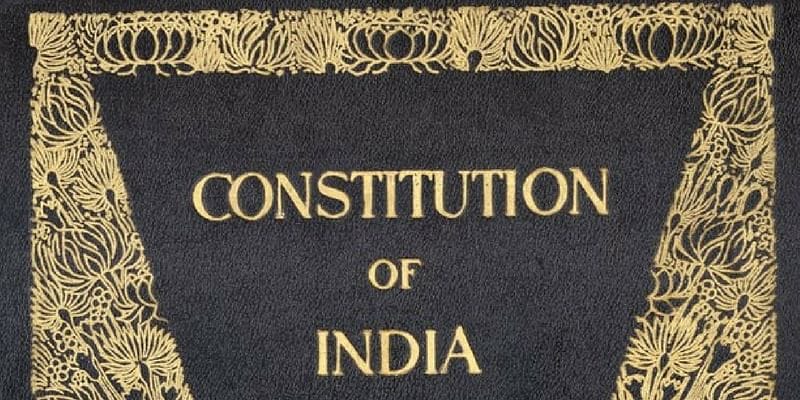
Entry 31 List I of the Seventh Schedule to the Constitution confers exclusive power on Parliament over broadcasting and telecommunications including DTH
Introduction
There are six districts in eastern Vidarbha that are described to as “Zudpi Jungle” or “Zudpi Forest” in the revenue records. These districts are Nampur, Wardha, Bhandara, Gondia, Chandrapur, and Gadchiroli.
By addressing long-standing conflicts involving parcels of property in these areas, the Supreme Court of India delivered a decree on May 22, 2025, which went down in history. This order was a landmark decision. For decades, despite the fact that it was classified as forest lands, this property had been used for a variety of purposes, including residential and agricultural purposes, public schools, health clinics, and government offices.
Following the assertion that around 86,409 hectares were inherently unsuitable for forestry management and therefore not be subject to the constraints of the Forest (Conservation) Act, 1980, the State of Maharashtra submitted a petition to the Court in an attempt to get redress from the legal system.
For any queries or to publish an article or post or advertisement on our platform, do call at +91 6377460764 or email us at contact@legalmaestros.com.
A comprehensive set of directions was given by the Supreme Court, which succeeded in striking a balance between the preservation of basic rights, the protection of the environment, and the welfare of the society. Following the submission of extensive findings and a number of interventions by the Central Empowered Committee (CEC), these instructions were released.
Historically Significant Context and Background
The term “Zudpi” comes from the Marathi language and refers to the formation of scrub or bushy vegetation on poor, gravelly soils that are not suitable for mature tree cover. This is a historical viewpoint on the genesis of the moniker. Following their identification by the Central Province Settlement Code of 1889, these properties were later integrated into the Land Revenue Codes of Madhya Pradesh and Maharashtra.
The statute that recognized these lands was the Central Province Settlement Code. The Nistar system was implemented in 1951, after the dissolution of feudal tenures, and it granted residents the rights to graze livestock and gather small forest products. Additionally, for the benefit of the whole community, local governments erected infrastructure like as schools, hospitals, housing, and public utilities on these sites.
For any queries or to publish an article or post or advertisement on our platform, do call at +91 6377460764 or email us at contact@legalmaestros.com.
Both uncertainty over the legal status of these areas and a de facto stop to development efforts were the results of the Forest (Conservation) Act, which went into force in 1980 and placed these properties subject to its restrictions. In spite of this, the act was subject to the constraints stipulated by her.
For More Updates & Regular Notes Join Our Whats App Group (https://chat.whatsapp.com/DkucckgAEJbCtXwXr2yIt0) and Telegram Group ( https://t.me/legalmaestroeducators )
In this context, the provisions of the law that are in question
The analysis that the Court conducted was based on a substantial number of legislative provisions. In accordance with the provisions of Section 2 of the Forest (Conservation) Act of 1980, it is against the law for any state or authority to de-reserve forests or utilize forest land for purposes other than forest management without first gaining authorization from the central government.
For any queries or to publish an article or post or advertisement on our platform, do call at +91 6377460764 or email us at contact@legalmaestros.com.
This is a violation of the law. Regardless of the natural characteristics of the property, “forest land” is defined as any land that is recorded in official documents as being a forest. This regulation applies to any land that exists. The state has the right to designate any section of forest land as a “Protected Forest,” which means that it is subject to severe management and safeguarding procedures.
This authority is granted to the state under Section 29 of the Indian Forest Act of 1927. On top of that, the punitive provisions of Sections 3A and 3B of the Act were invoked. These clauses empower authorities to be reprimanded for enabling the unlawful diversion or intrusion of forest areas that fall under their direct supervision.
There were a number of significant issues that were taken into consideration by the Circuit Court.
Among the many cases that were deemed to be interrelated by the Supreme Court, the following were among those that were resolved by the court:
For any queries or to publish an article or post or advertisement on our platform, do call at +91 6377460764 or email us at contact@legalmaestros.com.
Now, Zudpi Lands are categorized as “Forest.” This is the current classification.
Using its decision from 1996, which stated that the term “forest” must be construed in accordance with both the dictionary definition and the records kept by the government, the Supreme Court maintained that Zudpi lands, despite their scrubby appearance, are considered forest lands in accordance with Section 2 of the 1980 Act. Although the Zudpi lands appear to be scrubby, the Supreme Court’s decision supports this interpretation.
Consequently, beginning on October 25, 1980, permission from the central government is required for any use that is not at all linked to forestry. Nevertheless, the Court carved out an extraordinary, non-precedential remedy that enabled aggregated submissions for delisting those specific properties without imposing compensatory afforestation or Net Present Value taxes.
This exception was granted to the parties involved. In acknowledgment of the unique history of the lands and the major non-forest usage that had happened previous to December 12, 1996 at the time, this action was taking place.
For any queries or to publish an article or post or advertisement on our platform, do call at +91 6377460764 or email us at contact@legalmaestros.com.
The right to a place to live and the right to have a means of subsistence
Employing Article 21 of the Constitution, which protects the right to life and personal liberty, the Supreme Court made the comment that housing and agricultural livelihoods that have been established for more than half a century are fundamental to one’s dignity and capacity to exist.
This was done in order to ensure that individuals are able to continue living. It would be a breach of basic rights to deprive persons of their houses, farms, and essential services that have been constructed on these principles, as stated in Articles 38 and 39 of the Directive Principles, which oblige the state to promote social and economic fairness.
Therefore, it would be a violation of fundamental rights. As a consequence of this, the Court issued an order that, subject to the condition that there be no further transfers other than those that take place via inheritance, long-standing allotments that were made up to December 12, 1996, be regularized site-specifically.
For any queries or to publish an article or post or advertisement on our platform, do call at +91 6377460764 or email us at contact@legalmaestros.com.
preserving the natural environment and fostering growth that is environmentally responsible
Sustainable development was emphasized in the ruling, with a particular emphasis placed on finding a middle ground between the preservation of the environment and the need of the community.
All unallotted fragmented parcels, which are plots that are less than three hectares in size and are not contiguous with designated forests, were required to be declared Protected Forests in accordance with Section 29 of the 1927 Act. This requirement was enacted in order to ensure that all natural areas were protected. In order to forestall any future invasion, these Protected Forests were supposed to be monitored on a local level by Sub-Divisional Magistrates.
The state was required to submit simplified forms for the processing of diversion applications for activities that were not linked to forestry, which was one of the mandates that it imposed. This was accomplished in collaboration with the Central Government and the Central Election Commission. Getting this done without putting an excessive burden on the state’s administrative purse was the objective.
For any queries or to publish an article or post or advertisement on our platform, do call at +91 6377460764 or email us at contact@legalmaestros.com.
This article discusses accountability as well as the potential for future regulation.
Sections 3A and 3B of the Forest (Conservation) Act were referenced by the court as the foundation for the identification and disciplinary action that was instructed to be taken against officials accountable for allocations made after 1996 that were not authorized by the central government.
The court’s decision was based on the determination that these officials were liable for the allocations. This action was taken in order to forestall any future unlawful deviations from the intended path.
Additionally, it established concrete deadlines, which included the following: the transfer of all reserved forest lands that were under the custody of the Revenue Department to Forest Departments within three months; the completion of Section 20 notifications under the 1927 Act within six months; and the removal of all post-1980 encroachments and commercial allotments within two years by specially constituted district task forces. All of these deadlines were established in accordance with the provisions of the 1927 Act.
For any queries or to publish an article or post or advertisement on our platform, do call at +91 6377460764 or email us at contact@legalmaestros.com.
The conclusion is that a comprehensive effort has been made to maintain the rights and livelihoods of people who have occupied and farmed these lands for centuries. This effort has also upheld legislative protections for forests, which is a significant accomplishment.
The Zudpi Jungle lands ruling is a representation of this endeavor since it was created. The wide definition of “forest land” that is established in Section 2 of the Forest (Conservation) Act of 1980 and utilizes Section 29 of the Indian Forest Act of 1927 was confirmed by the Supreme Court of the United States in order to preserve the ecological integrity of the country.
In the process of implementing site-specific regularization, mandated timeframes, and accountability mechanisms, the constitutional guarantees of housing, livelihood, and social justice were concurrently taken into consideration and upheld. A balanced strategy like this one may serve as a model for the settlement of land use disputes that are comparable to those that occur all throughout India.
For any queries or to publish an article or post or advertisement on our platform, do call at +91 6377460764 or email us at contact@legalmaestros.com.







